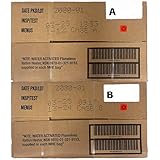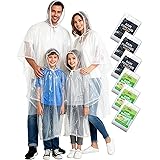Table of Contents
- 1. Start Small and Build Gradually
- 2. Implement Practical Daily Habits
- 3. Focus on High-Priority Areas First
- 4. Utilize Available Resources Effectively
1. Start Small and Build Gradually
Begin with Simple Steps
Okay, so first things first, let’s not try to tackle everything at once. Trust me, Rome wasn’t built in a day and neither will your preparedness plan. Start with the basics, like ensuring you have a first aid kit at home. It’s an easy win, and who doesn’t love those?
When I first started, I bought a small emergency kit from a local store. It had the essentials and made me feel a lot more confident. Taking that first step, however small, can be a huge morale booster. It’s all about those little victories setting you up for bigger wins down the line.
Plus, by focusing on small, manageable tasks, you can avoid the trap of analysis paralysis. You’re way more likely to keep the momentum going if you’re not overwhelming yourself from the get-go. Take those baby steps, they add up faster than you think!
Set Achievable Goals
Another tip from my own playbook—set goals that you can actually reach. Look, I get that it’s tempting to write down grand plans with a hundred boxes to check. But let’s be real, that’s a quick route to Burnout City. So instead, try to set small, realistic goals.
When I write down my goals, I aim for things that can be done in a day or two. Like stocking up on non-perishable foods or finally getting around to learning basic first aid. Over time, these small tasks compound, and before you know it, you’ve got a comprehensive preparedness plan.
Also, it feels really good to check things off your list. Trust me, it’s a dopamine hit you wouldn’t want to miss. Each checkmark is a small leap toward being more prepared.
Celebrate Your Progress
This one’s super important and often overlooked. Celebrate your wins, no matter how minor they seem. Listen, you’re doing something incredible here, taking steps to protect yourself and your loved ones. That deserves some acknowledgment.
When I first started, I’d celebrate by treating myself to a nice meal or a relaxing evening. It’s essential to reward yourself to keep the motivation levels high. Think of these celebrations as mini-victories on your path to preparedness glory.
== > What if ... Get a FREE Subscription to PREPARE
So, don’t just cross something off your list and move on. Take a moment to pat yourself on the back. You’re leveling up in your preparedness game, and that deserves some kudos!
2. Implement Practical Daily Habits
Routine Check-Ins
Alright, let’s talk about making preparedness part of your daily grind. Routine check-ins are where it’s at. Just like brushing your teeth or grabbing your morning coffee, checking your emergency supplies should become a habit.
Once a week, I take five minutes to glance over my supplies. Are the batteries still good? Is my water stockpile holding up? Little things like that. You’d be surprised at how these small, consistent actions can help maintain your preparedness without it feeling like a huge chore.
The key is consistency. By embedding these habits into your routine, you’ll feel more prepared without the sense of overwhelming pressure. It becomes second nature, almost like muscle memory for your preparedness skills.
Keep Your Skills Sharp
Another thing I recommend is keeping your skills sharp. Knowing what to do in an emergency can be just as important as having the supplies. A big part of preparedness is skill development. You have to know how to use what you have.
Take time to brush up on your first aid skills or learn how to use an emergency radio. There are tons of online resources and local workshops for this kind of stuff. I try to dedicate at least one day a month to learning something new or refreshing what I already know.
This way, you’re not just hoarding supplies but also investing in yourself. And trust me, knowing you’ve got the skills to handle a situation can alleviate a lot of the anxiety around preparedness.
Stay Organized
Lastly, staying organized is crucial. You can have all the supplies in the world, but if you’re not organized, you’re just setting yourself up for stress. Keep your emergency items in a designated area and make sure they’re easily accessible.
I’ve found that clear plastic bins work wonders for this. They keep everything visible and tidy, making it super easy to find what you need when you need it. Labeling the bins also helps, especially in a moment of panic.
Organization can turn chaos into order, providing some peace of mind. When you know exactly where everything is, you’re already one step ahead in any emergency scenario.
3. Focus on High-Priority Areas First
Identify Critical Needs
Next, let’s talk about prioritizing what really matters. I believe it’s essential to focus on high-priority areas first. Get the most important things squared away before dealing with the less critical items. It’s about maximizing your impact with the least amount of stress.
For me, this means food, water, and medical supplies. These are my non-negotiables. Once I had these sorted, I felt a lot more at ease. If you’re starting from scratch, tackle these essential areas first. You’ll immediately feel much better prepared.
Don’t worry about the fringe items or advanced gear just yet. Focus on what you absolutely need to survive and thrive in a crisis, and build from there.
Allocate Resources Wisely
Right, so you’ve identified your critical needs, now it’s time to allocate your resources wisely. You don’t have to break the bank to be prepared. Trust me; you can do this on a budget. Prioritize where your money and time go.
When I started, I made a list of high-priority items and budgeted accordingly. Instead of buying everything at once, I set aside a bit of money each paycheck. This way, I could gradually build my stockpile without feeling financially overwhelmed.
It’s about being smart with what you have and slowly accumulating what you need. Remember, preparedness is a marathon, not a sprint. Allocate wisely, and you’ll be less likely to feel overwhelmed.
Avoid Information Overload
In the age of the internet, we have access to an endless stream of information. And while that can be great, it can also be overwhelming. Avoid information overload by focusing on credible sources and limiting your intake.
When I first started, I found myself diving down rabbit holes and getting lost in endless forums and articles. It was exhausting. Then I decided to stick to a few trusted resources. It made a world of difference in managing my stress levels.
Pick a couple of reliable websites, books, or experts to follow. This way, you can gather the information you need without drowning in it. Trust me, your sanity will thank you.
4. Utilize Available Resources Effectively
Take Advantage of Community Resources
Let’s talk about tapping into community resources. You don’t have to do this alone. Many communities offer valuable resources like preparedness workshops, training sessions, and emergency alerts.
I found a lot of helpful info and free resources through my local community center. They offered seminars and even distributed free emergency supply kits. It’s a fantastic way to learn and prepare without feeling the burden entirely on your shoulders.
So, take advantage of what’s available in your area. You’d be surprised at how much support you can find. And, it’s also a great way to meet like-minded folks who are on the same journey.
Learn from Online Platforms
In addition to local resources, there’s a wealth of information online. Websites, forums, and social media groups can be incredible sources of information and support. But remember, the trick is to consume wisely, as mentioned earlier.
When I started looking online, I joined a couple of preparedness groups on Facebook. The community was super supportive and full of valuable tips and advice. It felt good to be part of a group where I could learn and share my own experiences.
However, avoid the trap of endless scrolling. Find the gems, engage meaningfully, and take actionable steps from what you learn. The aim is to be informed, not overwhelmed.
Practical Use of Free Tools
There are numerous free tools and apps designed to help with preparedness. From checklist apps to weather alert systems, leveraging these tools can make a big difference. And hey, who doesn’t like free stuff?
One tool that I found incredibly useful is a simple to-do list app. I created different lists for various aspects of my preparedness plan, allowing me to track progress and keep things organized. Another great resource is weather alert apps, which keep me updated with real-time information.
The key is to find tools that genuinely help you and integrate them into your routine. They can simplify the process and make you feel more in control. And let’s face it, anything that helps shrink the mountain of preparedness tasks is a win in my book.
FAQs
1. How can I start practicing preparedness without feeling overwhelmed?
Start with small, manageable tasks and gradually build from there. Setting achievable goals and celebrating your progress along the way can also help keep you motivated without feeling overwhelmed.
2. Are there free resources available for learning about preparedness?
Yes, many communities offer free workshops, training sessions, and emergency kits. Additionally, there are numerous online platforms and apps available where you can learn and stay updated on preparedness tips.
3. What are some practical daily habits for staying prepared?
Routine check-ins of your supplies, keeping your skills sharp, and staying organized can make preparedness a natural part of your daily routine. These habits help maintain your state of readiness without requiring massive time investments.
4. How do I focus on high-priority areas first?
Identify your critical needs such as food, water, and medical supplies. Allocate your resources wisely to address these needs first, and be cautious of information overload by sticking to credible sources.






